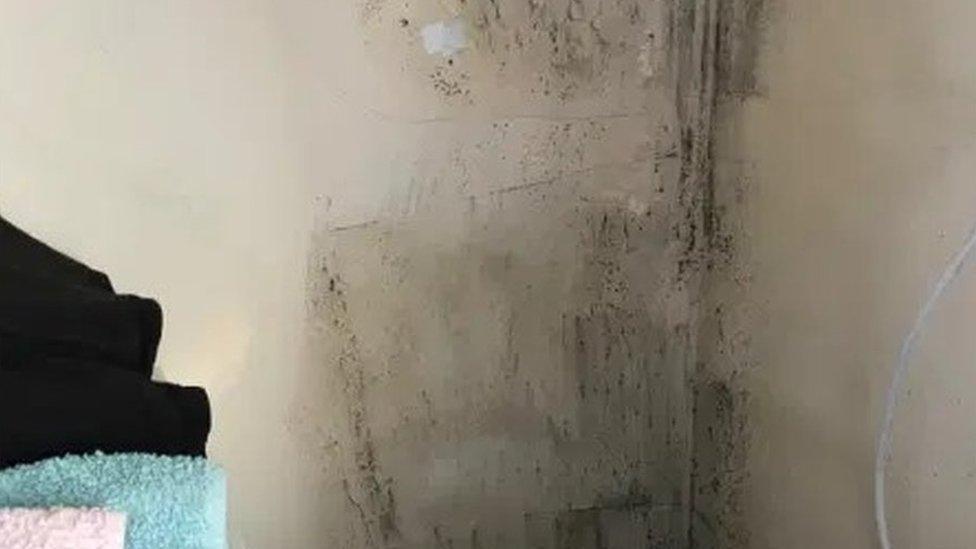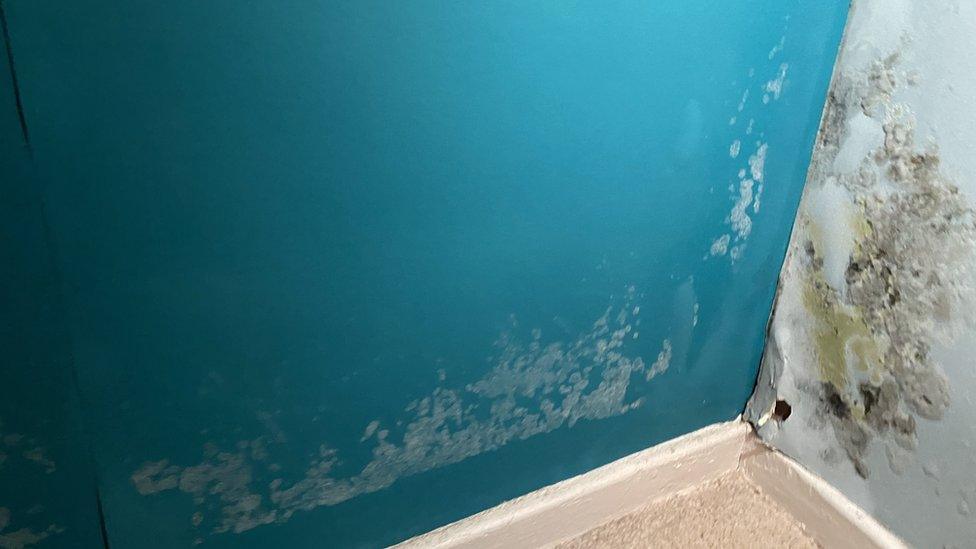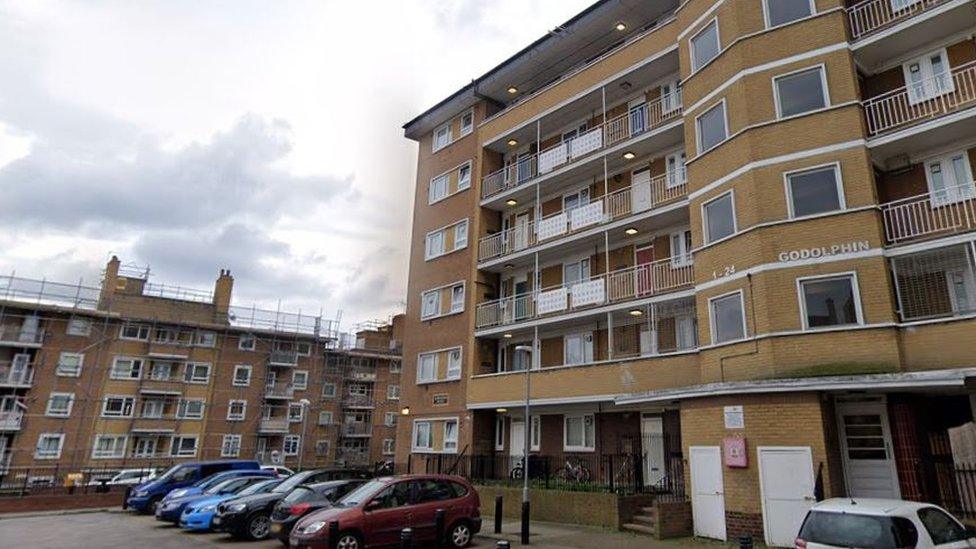St Martin's Estate: Legal action over 'mouldy and damp' homes
- Published

Residents have complained of mouldy walls and damp for six years
Three housing associations are facing legal action from a council for failing to keep homes up to standard.
Up to 600 flats across 23 blocks in the St Martin's Estate in Tulse Hill, south London, are believed to have "unacceptable" levels of damp.
Residents say they have complained of the conditions for the past six years.
A Lambeth Council report found the housing associations, which manage the properties, blamed residents' "behaviour and lifestyle" for the damp.
One housing association, Metropolitan Thames Valley Housing (MTVH), disputed the report's findings, saying it did not give a "complete account of the works that had been conducted or that are planned to be carried out".
Nikki Murphy, 38, who has lived on the estate since 2007, said: "I have my windows open all the time.
"It's always cold, but that does help to reduce the damp inside the property. Every day there is condensation on my front door.

The report found structural defects, poor design and deficiencies in thermal insulation were the cause of damp and mould
"Water drips down from the ceilings in the communal areas, making the stairs slippery and unsafe. Our staircase is totally mouldy and there are icicles hanging from the ceiling."
She added: "It makes me concerned for my family's health. My daughter has asthma and I had Covid in March. My breathing has not been the same since. Damp conditions are not helpful when you suffer a breathing condition."
The report said the scale of damp was significant.
'Poor design'
It added landlords on the estate had "been aware for a number of years that there were significant structural defects to the fabric of buildings", but rather than fix the issue they "routinely assumed that the lifestyle and behaviour of residents were the primary factor for the presence of condensation damp and mould in flats".
The report, commissioned last year, found structural defects, poor design and deficiencies in thermal insulation were the cause of damp and mould.
Lambeth Council said it had now started enforcement action under the Housing Act.
All three housing associations - MTVH, Notting Hill Genesis and Optivo - have apologised to residents and said they would carry out further work if more problems were found after further investigations.
In a statement, Optivo said it "strongly refuted" any allegation it had not kept its homes up to standard, adding since it took over the management of its blocks in 2017, it had invested more than £3m and was planning to spend £4.1m over the next five years on further improvements.
It said a specialist consultant carried out a full external structural survey at the end of 2019 which indicated there were no major issues.

The estate is made up of 600 homes
Notting Hill Genesis said when it took over some of the buildings in 2017, it carried out work such as mould washing, redecoration and installing de-humidistat fans in bathrooms.
MTVH said throughout the past year it had fixed damp problems on the estate and that it was investing £3.5m in improvements over the next five years.